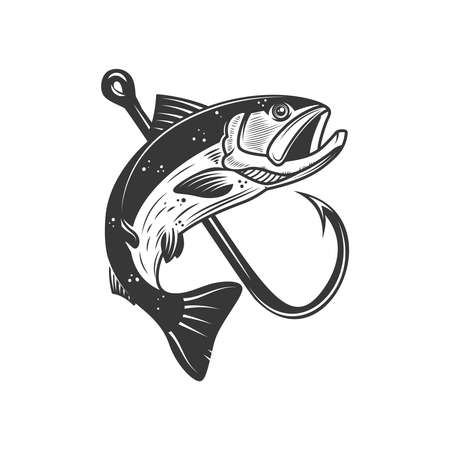Understanding Tournament-Pressured Waters
Bass fishing tournaments have transformed some of Americas best lakes into high-pressure battlegrounds, creating a unique set of challenges for both fish and anglers. These competitive events draw large crowds and fleets of skilled fishermen, resulting in bass that are not only wary but also highly adaptive to repeated angling pressure. As a result, the dynamics of these tournament-pressured waters shift dramatically compared to less-fished lakes.
Behavioral Changes in Heavily-Fished Lakes
When bass are constantly pursued by experienced anglers armed with the latest gear and techniques, their behavior evolves quickly. In pressured environments, bass become more selective in their feeding times, locations, and even the types of lures they strike. They often retreat to deeper water, tighter cover, or unconventional spots that receive less attention. The increased boat traffic and frequent casting also cause them to become skittish and react negatively to traditional power-fishing tactics.
The Influence of Tournaments on Fish Patterns
Tournament schedules play a significant role in shaping fish behavior throughout the year. Before major events, practice sessions and pre-fishing can educate bass, making them more difficult to fool during competition. Immediately after tournaments, fish may temporarily relocate or become inactive due to stress. Over time, this cycle creates a population of “educated” bass that require a finesse-driven approach and creative strategies to catch consistently.
Adapting Angler Strategies for Success
To stay competitive on pressured waters, American anglers have had to evolve alongside the bass they pursue. This means moving beyond standard presentations and embracing advanced light tackle finesse techniques designed to trigger bites from even the most cautious fish. Understanding these unique water dynamics is the first step toward developing a winning strategy—one that relies on subtlety, adaptability, and an in-depth knowledge of how tournament pressure shapes both fish and human behavior on the water.
Gear Up: Cutting-Edge Light Tackle Setups
When tournament waters are under heavy pressure, your gear can make or break your day on the leaderboard. Using advanced light tackle setups is essential to trigger bites from finicky bass and other game fish. Let’s break down the must-have components for finesse fishing in these competitive environments.
Spinning Setups: The Modern Finesse Standard
Today’s top anglers rely on high-quality spinning reels paired with lightweight rods. These combos allow for superior casting distance, better line management, and the subtle presentations that pressured fish demand. When selecting a spinning reel, look for a smooth drag system and a gear ratio in the 6.0:1 range for optimal versatility.
Choosing the Right Fluorocarbon Line
Fluorocarbon is the go-to line for finesse tactics because of its low visibility underwater and excellent sensitivity. Line diameter plays a critical role—too thick, and you risk spooking wary fish; too thin, and you sacrifice strength. Here’s a quick comparison of popular options:
| Pound Test | Diameter (inches) | Best Use Case |
|---|---|---|
| 4 lb | 0.007 | Panfish, ultra-clear water |
| 6 lb | 0.008 | Drop shotting, finesse worms |
| 8 lb | 0.009 | Ned rigs, small swimbaits |
Sensitive Rods: Feel Every Bite
A rod’s sensitivity is vital when targeting pressured tournament fish that might only mouth a bait before spitting it out. Opt for rods built with high-modulus graphite blanks—these transmit even the subtlest vibrations straight to your hand. A 7’ to 7’3” medium-light to medium power rod with a fast action tip is perfect for most finesse techniques.
Tournament-Tested Tackle Pairings
| Rod Length/Action | Reel Size | Main Technique |
|---|---|---|
| 7’ ML Fast | 2500 Series | Ned Rig, Wacky Rig |
| 7’3” M Fast | 3000 Series | Dropshot, Shaky Head |
The right combination of spinning setups, fluorocarbon lines, and sensitive rods will give you the edge needed to outsmart even the most heavily pressured fish during tournaments.

3. Winning Presentations and Lure Selection
Mastering Finesse Presentations
In high-pressure tournament waters where bass have seen it all, the angler who excels at finesse presentations often comes out on top. Techniques like drop shotting, ned rigs, and shaky heads have earned their place as staples in every serious competitor’s arsenal. The key to winning with these methods is subtlety—presenting your bait in a way that feels natural and irresistible to wary fish, even when the bite is tough.
Drop Shotting: Precision in Depth
The drop shot is a go-to technique for targeting suspended or bottom-hugging bass. By keeping your bait just above the cover and making subtle twitches, you can entice pressured fish into biting when traditional approaches fail. In American tournament scenes, customizing your leader length and experimenting with soft plastics—like slim-profile worms or minnow imitations—can make all the difference.
Ned Rigs: Minimalism Wins Big
Ned rigs shine when bass are finicky. Their small profile and neutral buoyancy mimic easy prey, especially on clear, heavily fished lakes. U.S. anglers often modify their Ned baits by trimming them down further or adding scent to stand out from the crowd. Pairing these tweaks with lighter line and sensitive spinning tackle helps maximize bites without spooking skittish fish.
Shaky Heads: Subtle Action, Major Results
The shaky head is another finesse staple that’s proven its worth from coast to coast in American tournaments. Rigging straight-tail worms or creature baits on a light jighead allows for a quivering action that draws strikes from pressured bass. Tournament pros frequently dye the tail or add rattles for extra attraction, adapting their presentation to match local forage or water conditions.
Lure Modifications for the Competitive Edge
Standing out on tournament day often comes down to small details. Savvy U.S. anglers tweak stock lures by swapping hooks for finer wire versions, adding subtle color accents with markers, or using custom scents tailored to regional fisheries. These modifications can turn a standard finesse rig into a big-money winner when everyone else is throwing off-the-shelf gear.
Ultimately, winning with finesse isn’t just about using lighter tackle—it’s about thoughtful presentation and smart lure selection. By mastering advanced techniques and making strategic modifications, you’ll put more keepers in the livewell—even on the toughest tournament waters.
4. Tactical Approaches for Finicky Fish
When tournament pressure peaks and bass grow wary, finesse fishing isn’t just a preference—it’s essential. Understanding how to adapt with slow retrieves, vertical presentations, and subtle lure movements can be the deciding factor between a tough day and a check-cashing finish. Let’s break down these tactical approaches so you can consistently fool even the most cautious bass.
Slow Retrieves: Patience Pays Off
In heavily pressured waters, bass often shy away from fast-moving or aggressive baits. Slowing your retrieve keeps your lure in the strike zone longer and gives suspicious fish more time to commit. This technique shines with soft plastics, lightweight jigs, and small swimbaits. Consider varying your cadence—stop-and-go retrieves or gentle twitches mimic wounded prey and can trigger instinctive bites when nothing else works.
Vertical Presentations: Targeting Suspended Bass
When bass suspend off structure or school tightly in deep water, vertical techniques come into play. Drop shot rigs, Ned rigs, and vertical jigging allow you to present baits directly above or within the strike range of finicky fish without spooking them. This approach is especially effective when paired with electronics to pinpoint exact locations.
| Vertical Technique | Best Scenario | Bait Example |
|---|---|---|
| Drop Shot | Suspended over deep structure | Finesse worm or shad imitation |
| Ned Rig | Tight schools near bottom | Z-Man TRD or stick bait |
| Vertical Jigging | Directly under the boat in cold fronts | Spoon or blade bait |
Subtle Movements: Less Is More
The key to coaxing pressured bass is subtlety. Tiny rod shakes, dead-sticking (letting your bait sit motionless), and micro-movements all make your presentation look natural without alarming spooky fish. Sometimes, simply letting a wacky-rigged worm quiver on slack line is all it takes to get that tentative bite. The best tournament anglers know when to dial back their action for maximum effect.
Pro Tip: Watch Your Line!
Finicky bass often inhale baits without slamming them. Keep an eye on your line for any ticks, jumps, or unnatural movement—sometimes that’s your only clue you’ve fooled a wise old bass.
Mastering these nuanced tactics ensures you’ll stay competitive even when everyone else is struggling. Next time you’re faced with tough conditions and pressured fish, remember: finesse isn’t just about lighter tackle—it’s about outsmarting your quarry with patience and precision.
5. Weather, Conditions, and Making Adjustments
Success on pressured tournament waters isn’t just about having the right light tackle—it’s also about knowing how to tweak your approach as Mother Nature throws her curveballs. Whether you’re facing a sudden cold front, blazing sun, or shifting wind patterns, understanding how weather and water conditions affect fish behavior can mean the difference between cashing a check and heading home empty-handed.
Adapting to Weather Swings
In American tournament fishing, weather changes are notorious for making or breaking a bite. When clouds roll in or the barometer drops, bass often get finicky and hunker down. That’s when finesse shines. Downsizing your presentation—think smaller soft plastics on drop shots or Ned rigs—can trigger strikes from tentative fish. On bluebird sky days following a front, slow down even more and focus on shaded cover or deep structure where bass retreat until conditions stabilize.
Reading Water Clarity
Water clarity can shift rapidly due to rain, boat traffic, or wind-driven sediment. In clear water, it’s crucial to use natural colors and longer fluorocarbon leaders to avoid spooking wary fish. Conversely, when the water muddies up, don’t be afraid to go with slightly larger profiles and darker hues for better visibility. Switching from a subtle wacky rig to a compact jig with rattles can help bass hone in by sound as much as sight.
Seasonal Patterns Matter
Tournament anglers know that seasonal transitions dictate fish movements and feeding windows. During spring and fall cold snaps, fish may suspend off points or hold tight to cover; here, vertical finesse techniques like shaky heads excel. In summer heat or winter chills, working deeper ledges with drop shot rigs keeps your bait in the strike zone longer. Always track temperature swings with electronics and be ready to adjust depth and speed accordingly.
Staying Flexible for Tournament Success
The most successful light tackle anglers are those who constantly assess their surroundings and make incremental changes throughout the day. Keep an open mind, trust your electronics, and don’t hesitate to cycle through baits or presentations when the bite slows. By staying nimble in response to changing weather and water conditions, you’ll maximize your chances of outsmarting pressured fish—and winning with finesse when it counts.
6. Mental Game: Staying Calm in High Stakes
When it comes to tournament fishing, especially in pressured waters where every cast counts, your mental game can make or break your performance. The psychological aspect of competitive angling is just as crucial as your finesse techniques or choice of light tackle. Understanding how to maintain confidence, focus, and patience—particularly when the bite is slow—can give you the edge over your competitors.
Confidence Under Pressure
Believing in your game plan and trusting your instincts is vital during high-stakes tournaments. It’s easy to second-guess yourself when others are catching fish and you’re not, but sticking with your strategy often pays off. Remind yourself of past successes using similar tactics and remember that everyone faces tough stretches on the water.
Sharpen Your Focus
Distractions abound during tournaments—from chatter at the launch ramp to the pressure of a ticking clock. Elite anglers develop routines to stay present and attentive. Whether it’s a pre-cast breathing technique or methodically reviewing each presentation, keeping your mind locked in on every detail helps prevent costly mistakes.
Cultivating Patience
Tournament waters can go cold quickly as fish become wary from repeated presentations. Instead of panicking or overworking a spot, seasoned anglers know to slow down, adjust their approach, and wait out the lull. Patience isn’t passive—it’s an active decision to keep working your plan, tweaking as needed without getting frustrated or desperate.
Bouncing Back from Setbacks
Mistakes and missed bites are inevitable, but your reaction determines your outcome. Take a moment to reset after setbacks—shake off frustration and refocus on what you can control. Visualizing success before each cast and maintaining a positive inner dialogue can help you recover quickly and stay in contention.
In the end, winning with finesse is about more than gear or technique; it’s about mastering your mindset when it matters most. Stay calm, trust your skills, and let your mental toughness shine through on even the toughest tournament days.


